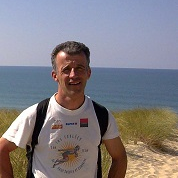The Retrievals and Application of Vegetation Optical Depth and Soil Moisture
A special issue of Remote Sensing (ISSN 2072-4292). This special issue belongs to the section "Remote Sensing in Agriculture and Vegetation".
Deadline for manuscript submissions: closed (31 May 2023) | Viewed by 1540
Special Issue Editors
Interests: passive microwave remote sensing; vegetation optical depth; carbon balance
Special Issues, Collections and Topics in MDPI journals
Interests: vegetation productivity; vegetation optical depth; solar-induced fluoscence
Interests: microwave remote sensing; forest biomass and carbon; vegetation optical depth
Special Issues, Collections and Topics in MDPI journals
Interests: passive and active microwave remote sensing of soil and vegetation; water and carbon cycles; soil moisture; vegetation optical depth (VOD); L-MEB model (L-band microwave emission of the biosphere); Sentinel 1; ASCAT; AMSR2; SMAP; SMOS-IC
Special Issue Information
Dear Colleagues,
Vegetation distribution, phenology, and productivity are very sensitive to climate change, which impacts all terrestrial ecosystems. Microwave satellite remote sensing is a powerful tool to monitor the soil moisture vegetation dynamics from the local to the global scales owing to the great diversity of the frequency domains at various spatial and temporal resolutions. Vegetation optical depth (VOD), a vegetation index retrieved from passive or active microwave remote sensing systems, is directly proportional to the water content of the total aboveground vegetation. This index has been increasingly used for ecological applications at large scales due to its independence from atmospheric perturbations and sensitivity to biomass. This Special Issue aims to present reviews and recent advances of general interest in the use of soil moisture and VOD data for ecological applications.
In this Special Issue, original research articles and reviews are welcome. Research areas may include (but are not limited to) advancing remote sensing techniques in retrieving VOD, original studies based on the spatial and/or temporal monitoring of VOD, or ecological applications based on VOD and soil moisture from the local to global scales.
Prof. Dr. Lei Fan
Dr. Tianxiang Cui
Dr. Zhongbing Chang
Dr. Jean-Pierre Wigneron
Guest Editors
Manuscript Submission Information
Manuscripts should be submitted online at www.mdpi.com by registering and logging in to this website. Once you are registered, click here to go to the submission form. Manuscripts can be submitted until the deadline. All submissions that pass pre-check are peer-reviewed. Accepted papers will be published continuously in the journal (as soon as accepted) and will be listed together on the special issue website. Research articles, review articles as well as short communications are invited. For planned papers, a title and short abstract (about 100 words) can be sent to the Editorial Office for announcement on this website.
Submitted manuscripts should not have been published previously, nor be under consideration for publication elsewhere (except conference proceedings papers). All manuscripts are thoroughly refereed through a single-blind peer-review process. A guide for authors and other relevant information for submission of manuscripts is available on the Instructions for Authors page. Remote Sensing is an international peer-reviewed open access semimonthly journal published by MDPI.
Please visit the Instructions for Authors page before submitting a manuscript. The Article Processing Charge (APC) for publication in this open access journal is 2700 CHF (Swiss Francs). Submitted papers should be well formatted and use good English. Authors may use MDPI's English editing service prior to publication or during author revisions.
Keywords
- microwave remote sensing
- vegetation optical depth
- soil moisture
- remote sensing
- eco-hydrological applications
- vegetation water content
- biomass








